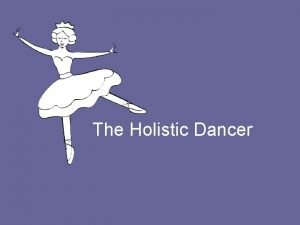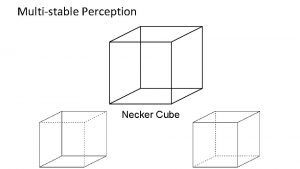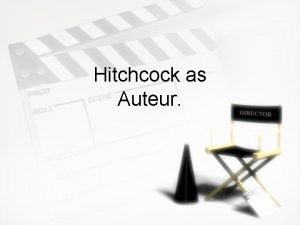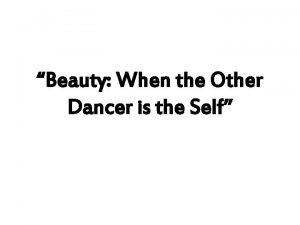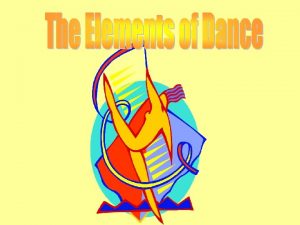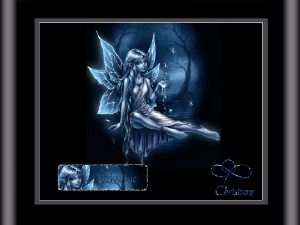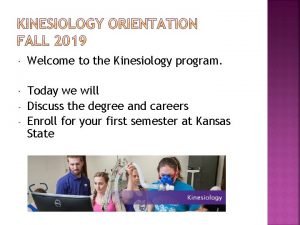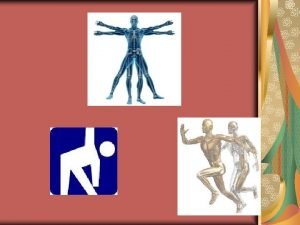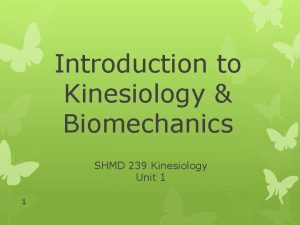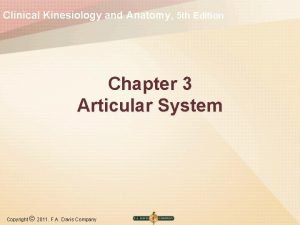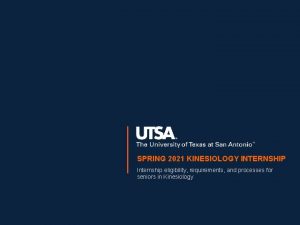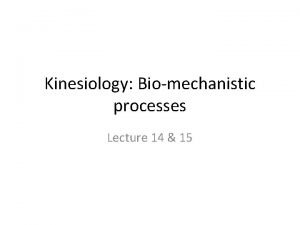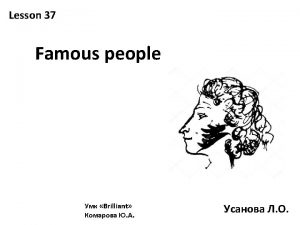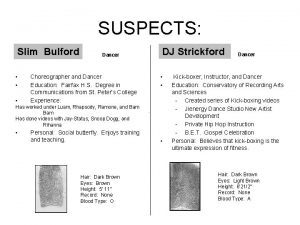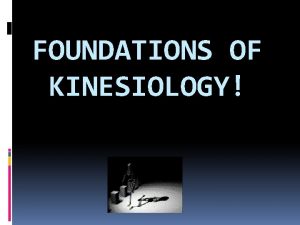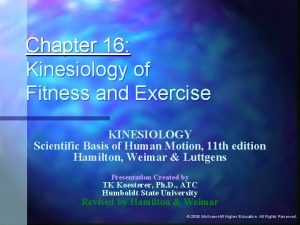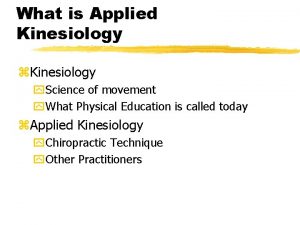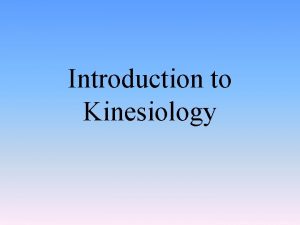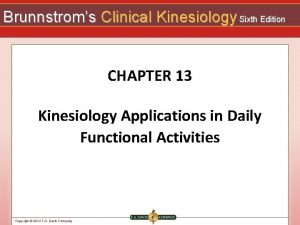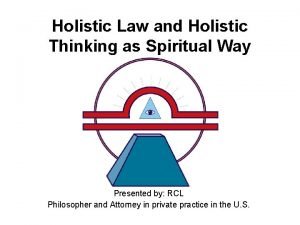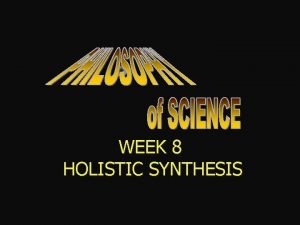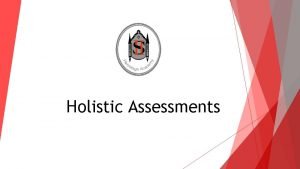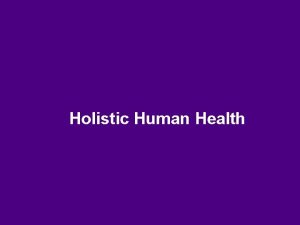The Holistic Dancer I Can 1 Define Kinesiology


















- Slides: 18

The Holistic Dancer

I Can: 1. Define Kinesiology & Anatomy. 2. Explain what part the body plays in dance (or why we study it). 3. Tell why dancers need to understand their body. 4. List the five safety tips for dance. 5. List the three thing needed to prevent injuries. 6. Explain why physical fitness is important. 7. List the three basic things to be/stay physically fit.

Holistic Dancing • • Anatomy Injuries Nutrition & Eating Disorders Fitness

Kinesiology Is the study of the principles of mechanics and anatomy in relation to human movement.

The science concerned with the physical structure of animals and plants.

Why Is This Important To Dancers? 1. To understand movement you need to understand the bones, joints, & muscles; they are the building blocks that provide you with the ability to create motion. 2. Every dancers instrument has different capabilities and talents.

Why do we study the body: because: The BODY is the INSTRUMENT of dance.

• • • • A - Foot B - Tibia C – Patella (Knee-cap) D – Hand – Wrist E – Radius F – Humerus G – Spine H – Skull I. – Clavicle J – Thorax (Ribs/Sternum) K – Ulna L – Femur M – Fibula N – Scapula O – Pelvis (co-axial) P – Sacrum

Muscles For Test • Trapezius • Deltoids • Pectorals • Biceps • Adbominals • Obliques • Quadriceps • Gastrocnemius • Trapezius • Triceps • Gluteals • Hamstrings

How they work together! The skeleton provides leverage, the muscles are the motors that act on the levers, and the joints are the fulcrum.

Dance Injuries With over 600 muscles, 206 bones and countless nerves, ligaments, and tendons in the body, it's almost impossible for dancers to escape getting injured. New dancers must build their strength and flexibility slowly and safely.

Specific problems of the dancer that can cause injuries are: • Overuse • Improper alignment and poor body mechanics • Improper or Inadequate conditioning • Variation of dance techniques

Common Dance Injuries • Ankle Sprains • Knee Injuries • Hamstring Injuries • Back Injuries • Hip Injuries

Injury Prevention Proper conditioning is vital for the dancer. In order for anyone to efficiently execute a motor task, there must be adequate STRENGTH, FLEXIBILITY and ENDURANCE. Good posture and ALIGNMENT also allow for the maximum functioning of the body with the expenditure of the least amount of energy.

General Safety Tips for Dance • Do a proper warm-up • When doing knee bends (plies) keep the knees over the toes. • When doing any kind of jump, start from bent knees (plie’) and land with bent knees (in a plie). • Align the spine properly in every exercise. Avoid a hyper extended back or a forward-thrust pelvis. • Make sure shoulders are relaxed and pulled down. Avoid hunching. • Cool down.

Nutrition All dancers need to ingest sufficient energy to meet the rigors of hard training. Consuming the right amounts and types of food and fluid will provide the body with "high performance fuel" necessary to achieve optimal training benefits and peak performance.

Fitness To stay physically fit you need to participate in activities that do three basic things: 1. Get your heart and lungs pumping (aerobic) for 30 minutes or more 2. Keep your body limber (flexibility) 3. Tone your muscles ( strength

Why is Physical Fitness Important? 1. You feel better. You have more energy, feel less tired, and it helps you cope with stress. 2. You look better. Regular physical activity helps control your appetite, tones your muscles, and lowers your body fat, all of which can improve your appearance. 3. Improved overall health. Keeping fit can help you prevent coronary heart disease, high blood pressure, obesity, and osteoporosis. It can also help manage diabetes and depression.
 Holistic kinesiology definition
Holistic kinesiology definition Anna kochanova dancer
Anna kochanova dancer Spinning ballerina illusion
Spinning ballerina illusion Rear window dancer
Rear window dancer Beauty when the other dancer is the self
Beauty when the other dancer is the self Billy elliot main characters
Billy elliot main characters You know dasher and dancer and prancer song
You know dasher and dancer and prancer song Anna pavlova childhood
Anna pavlova childhood The area of space occupied by the dancer's body
The area of space occupied by the dancer's body Cinderella dressed in yella went upstairs to kiss a fella
Cinderella dressed in yella went upstairs to kiss a fella Sky dancer jouet
Sky dancer jouet What is kinesiology
What is kinesiology Fixation in kinesiology
Fixation in kinesiology Biomechanics kinesiology definition
Biomechanics kinesiology definition Degrees of freedom kinesiology
Degrees of freedom kinesiology Inertia in kinesiology
Inertia in kinesiology Pcb 3703c ucf
Pcb 3703c ucf Utsa kinesiology internship
Utsa kinesiology internship Canadian kinesiology alliance
Canadian kinesiology alliance
